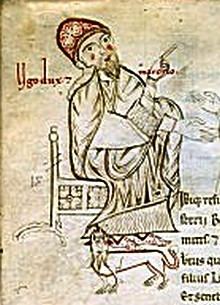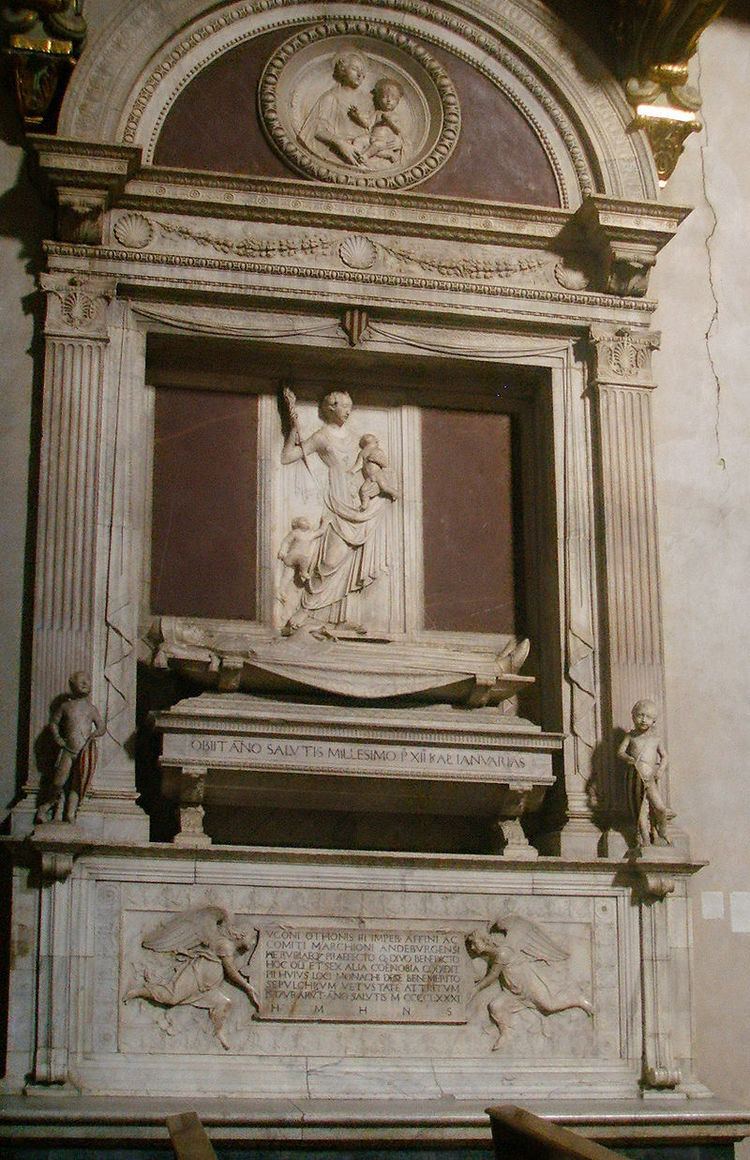Name Hugh, of Parents Hubert, Duke of Spoleto | Children Willa di Ugo | |
 | ||
Died December 21, 1001, Pistoia, Italy People also search for Hugh of Italy, Placido Puccinelli, Nicholas Fitzherbert | ||
Hugh (Latin: Ugo, Hugo; 953/4 – 21 December 1001), called the Great, was the Margrave of Tuscany from 969 until his death, and the Duke of Spoleto and Margrave of Camerino from 989 to 996 (as "Hugh II"). He restored the state apparatus in Tuscany after decades of neglect by margraves whose main interests lay elsewhere. Hugh supported the new Ottonian dynasty (in Italy since 961), and was praised for his justice by the contemporary theologian Peter Damian in his De principis officio (On the Office of a Prince).
Hugh was the son and successor of Hubert, an illegitimate son of King Hugh. His mother was Willa, a daughter of Boniface I, Duke of Spoleto and Margrave of Camerino. The Tuscany that Hugh inherited was not yet characterised by incastellamento (except in the diocese of Lucca) and royal intervention was rare. It was also larger in area than it had been under the last margrave unaffiliated with the royal family, Adalbert II (died 915). The march was defined less by geography than by the public institutions controlled by the margrave. Hugh had his own tribunals, mints and army, and the lands he distributed to the church in his march was mostly public land.

The basis of Hugh's power was the wealthy cities of the Arno valley, although he also possessed extensive landed properties. Towards the end of his life he increasingly dissipated marchesal (public) lands on the foundation of monasteries. The increase in gift-giving to monasteries by Hugh and his vassals (fideles) has been linked to a "spiritual revival". Hugh gave lands around Arezzo to the Guidi clan, a family he patronised. He also gave some to the churches of the city, acts confirmed later by the emperors Otto III and Henry II. Hugh supported Otto III in his ecclesiastical reforms and against Venice, to whose duke, Pietro IV Candiano, he was related. In 996, Otto placed the eight Adriatic counties disputed between him and the papacy under the joint control of Hugh and Margrave Conrad of Ivrea, also Duke of Spoleto and Camerino, although he also left a missus to oversee the courts and finances. In a letter dated 5 August 996 Otto tells Pope Gregory V that "we are leaving the foremost men of Italy as aid and comfort to you—Hugh of Tuscany, faithful to us in everything, and Conrad. . .", and goes on to assure him he would receive "the works and services due" him in the disputed territory.
Hugh took an interest in the affairs of Bobbio, a monastery in disarray, and a correspondence with its abbot in self-imposed exile, Gerbert of Aurillac. Hugh seems also to have been on familiar terms with abbot Guarin of Cuxà. Gerbert wrote Hugh a letter dated 1 August 896. Hugh and Conrad of Ivrea apparently requested the Empress Theophanu to come to Italy to set matters straight at Bobbio. When Gerbert later became pope as Sylvester II, he summoned a synod at Rome on 13 January 1001, at which Hugh was present along with Duke of Bavaria, the future Henry II.
In 992, Aloara, the widow of Pandulf Ironhead, who had been regent of the Principality of Capua since her husband's death, died. A revolt broke out at Capua, which under Pandulf had recognised imperial authority, and Prince Landenulf II was assassinated. Hugh, whose job it was as ruler of Spoleto to maintain the link between the south Italian principalities and the empire, intervened to place Pandulf's youngest son, Laidulf on the Capuan throne and quell the revolt.
Upon Hugh's death at Pistoia in 1001, his state collapsed. In 1004 war broke out between Lucca and Pisa. The power of the House of Canossa, margraves from 1027 until 1115, barely extended beyond their own lands, and they did not control the cities. Hugh left no children by his wife Judith. He was buried in the Badia Fiorentina, which his mother had founded in 978, where a monument was later added by Mino da Fiesole. Hugh is still commemorated annually by the monks on 21 December, the feast of Saint Thomas. Hugh's life became surrounded by legends and he was remembered by Placido Puccinelli in the 17th century as a moral and pious prince. His tomb was said to be the site of celestial visions. The Tuscan poet Dante Alighieri, in Paradiso XVI, 127–30, calls Hugh a "great baron":
